Plaques de revêtement de toitureLes revêtements de toiture, souvent appelés l'armure de votre maison ou de votre entreprise, jouent un rôle crucial dans la protection des structures contre les éléments. Que vous construisiez une nouvelle structure ou que vous cherchiez à améliorer votre toiture existante, les tôles de revêtement de toiture offrent durabilité, esthétique et fonctionnalité. Ce guide vous expliquera tout ce que vous devez savoir sur les plaques de couverture, en particulier sur les options métalliques. Nous nous pencherons sur les tôles ondulées, explorerons les différents types de bardage, fournirons des informations techniques et expliquerons même comment choisir le bon fournisseur.
Vue d'ensemble des plaques de bardage
Les tôles de bardage constituent la couche extérieure d'un toit, protégeant la structure sous-jacente des conditions météorologiques, notamment de la pluie, de la neige et du vent. Les tôles de bardage métallique, en particulier, sont un choix populaire en raison de leur longévité, de leur solidité et de leur résistance à la corrosion. Mais ces tôles ont plus d'une corde à leur arc qu'elles n'en ont l'air. Elles sont disponibles dans une grande variété de modèles, de matériaux et de finitions, chacun offrant des avantages uniques et des applications spécifiques.
Qu'il s'agisse d'esthétique, de capacité d'isolation ou de résistance structurelle, le choix de la bonne tôle de bardage implique de nombreuses considérations.
Principales caractéristiques des plaques de bardage de toiture:
- Durabilité: Protection durable contre les facteurs environnementaux.
- Esthétique: Disponible en différentes finitions et profils pour répondre aux besoins architecturaux.
- Isolation: Certains matériaux offrent une isolation thermique, ce qui permet de réduire la consommation d'énergie.
- Facilité d'installation: Les plaques préfabriquées simplifient l'installation.
- Faible entretien: Une fois installé, le bardage métallique ne nécessite qu'un minimum d'entretien.
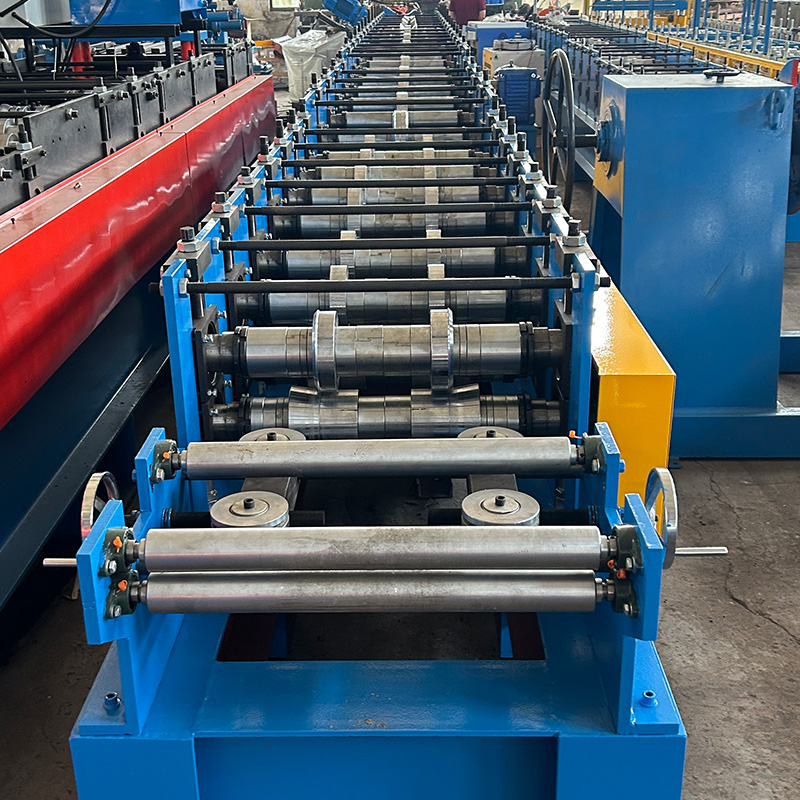
Guide des tôles ondulées
Les tôles ondulées constituent l'un des choix les plus populaires en matière de revêtement de toiture. Elles sont appréciées pour leur profil ondulé, qui non seulement renforce l'intégrité de la structure, mais assure également un bon écoulement de l'eau de pluie.
Qu'est-ce que la tôle ondulée ?
Les tôles ondulées sont des tôles qui présentent un motif répétitif en forme de vague. Fabriquées à l'origine en fer forgé, elles sont aujourd'hui le plus souvent en acier galvanisé ou en aluminium. Le motif ondulé renforce les tôles, ce qui les rend idéales pour les conditions climatiques difficiles. Les tôles sont généralement recouvertes de zinc, qui empêche la rouille, ce qui en fait un choix pratique et économique pour la couverture des toits dans tous les climats.
Types de Feuilles de revêtement de toiture
Les plaques de bardage se déclinent en différents matériaux et formes. Examinons les types les plus courants, en mettant l'accent sur leurs caractéristiques et leurs différences.
| Type | Matériau | Caractéristiques principales | Avantages | Inconvénients |
|---|---|---|---|---|
| Tôles ondulées | Acier galvanisé ou aluminium | Conception solide et ondulée, résistante à la corrosion | Durable, rentable | Peut être bruyant en cas de pluie |
| Feuilles à joint debout | Acier, aluminium, zinc | Coutures verticales pour une apparence élégante | Résistant aux fuites, aspect moderne | Coût plus élevé |
| Bardeaux métalliques | Acier, aluminium | Design en forme de tuile | Esthétique, remplacement facile | Complexité d'installation accrue |
| Panneaux métalliques composites | Aluminium avec noyau en plastique | Léger, isolé | Excellente isolation, finition élégante | Coûteux |
| Feuilles de bardage en zinc | Zinc | Naturellement résistant aux intempéries | Propriétés durables et autocicatrisantes | Plus cher que l'acier |
| Feuilles d'aluminium | Aluminium | Léger, résistant à la corrosion | Inoxydable, peu d'entretien | Plus faible que l'acier |
| Plaques de revêtement en cuivre | Cuivre | Attrayant, se patine au fil du temps | Longue durée de vie, esthétique unique | Cher, peut se ternir |
| Plaques de fibrociment | Ciment, fibre | Imite les matériaux naturels | Ignifuge, résistant à l'humidité | Plus lourd, moins flexible |
| Feuilles de polycarbonate | Plastique polycarbonate | Transparent ou translucide | Léger, haute résistance aux chocs | Peut se décolorer avec le temps |
| Feuilles de bitume | Bitume avec fibre de verre | Souple, étanche | Abordable, facile à manipuler | Durée de vie plus courte |
Comment fonctionnent les plaques de bardage
Les plaques de bardage sont essentielles pour assurer l'étanchéité et l'isolation de la structure. Voici un aperçu de leur fonctionnement, étape par étape :
- Installation: Les feuilles de bardage sont généralement posées sur une ossature de chevrons ou de liteaux. Cette ossature sert de support au bardage et permet une bonne évacuation de l'eau.
- Étanchéité: La fonction principale du bardage est de créer une barrière étanche, protégeant la structure de la pluie, de la neige et d'autres formes de précipitations.
- Isolation: Selon le type de feuille de bardage, ils peuvent fournir une isolation thermique, gardant les bâtiments plus frais en été et plus chauds en hiver.
- Ventilation: La conception des plaques, en particulier avec les profils à joint debout ou ondulés, favorise une bonne circulation de l'air, réduisant ainsi le risque de condensation à l'intérieur de la toiture.
- Soutien structurel: Le bardage métallique ajoute de la solidité à la toiture, en aidant à répartir le poids et à résister aux contraintes environnementales, telles que le vent ou la charge de neige.
-
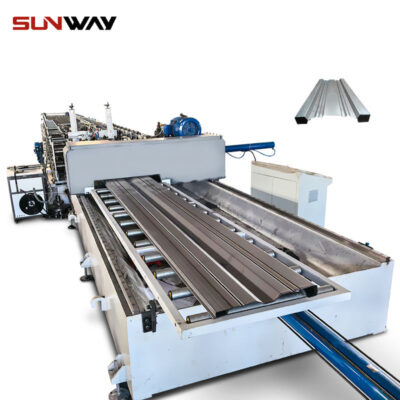 Petit pain de conseil de chariot formant la machine
Petit pain de conseil de chariot formant la machine -
 Machine de formage de bornes d'extrémité de glissières de sécurité pour autoroutes
Machine de formage de bornes d'extrémité de glissières de sécurité pour autoroutes -
 Profileuse pour poteaux d'autoroute U/C
Profileuse pour poteaux d'autoroute U/C -
 Machine de formage de rouleaux de glissières de sécurité à 2 vagues pour autoroutes
Machine de formage de rouleaux de glissières de sécurité à 2 vagues pour autoroutes -
 Machine de formage de rouleaux de glissières de sécurité à 3 vagues
Machine de formage de rouleaux de glissières de sécurité à 3 vagues -
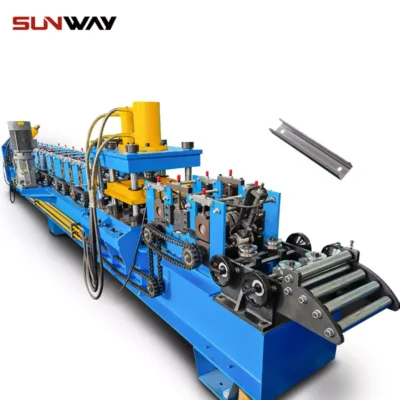 Section C renforçant la machine de formage de rouleaux de poteau de support de stockage Omega
Section C renforçant la machine de formage de rouleaux de poteau de support de stockage Omega -
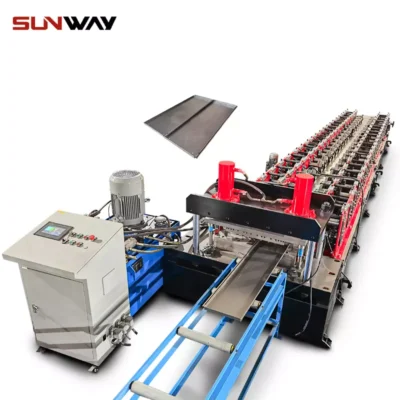 Plaque de boîte en acier faisant la machine de formage de rouleaux
Plaque de boîte en acier faisant la machine de formage de rouleaux -
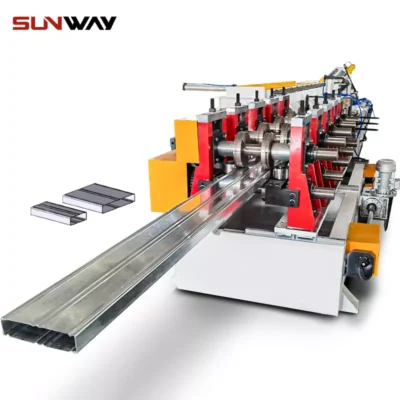 Petit pain en acier de poutre en caisson formant la machine pour la colonne d'étagère
Petit pain en acier de poutre en caisson formant la machine pour la colonne d'étagère -
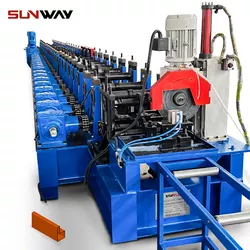 Pallet Racking Step Beam P Beam Roll Machine de formage
Pallet Racking Step Beam P Beam Roll Machine de formage
Composants clés et leurs fonctions dans les revêtements de toiture
| Composant | Fonction |
|---|---|
| Feuilles de bardage | Couche primaire pour l'imperméabilisation et la protection. |
| Fixations | Fixe les tôles de bardage à la sous-structure. Elles doivent être résistantes à la corrosion. |
| Produits d'étanchéité | Assure l'étanchéité au niveau des joints ou des coutures, évitant ainsi les fuites. |
| Couches d'isolation | Placé sous le bardage pour réduire le transfert de chaleur. |
| Chevrons/liteaux | Permet de soutenir le bardage et d'en assurer la stabilité. |
| Clignotant | Empêche les infiltrations d'eau au niveau des bords de toit, des noues et des jonctions. |
| Gouttières | Dirige l'eau de ruissellement loin du toit et de la structure. |
Vitesse et efficacité des machines dans la fabrication des revêtements de toiture
La production de plaques de bardage de toiture fait appel à des machines sophistiquées, conçues pour un rendement élevé et une grande efficacité.
| Type de machine | Vitesse | Efficacité |
|---|---|---|
| Machines de formage de rouleaux | 10-15 mètres/min | Production continue à haut rendement |
| Machines de coupe à longueur | 6-10 mètres/min | Coupe de précision, déchets minimes |
| Machines à souder les joints | 8-12 mètres/min | Assure l'étanchéité des joints, en particulier dans les tôles à joint debout. |
| Machines à poinçonner | 5-8 mètres/min | Perçage précis des trous pour l'emplacement des fixations |
Paramètres mécaniques personnalisés pour les tôles de revêtement de toiture
Les plaques de bardage peuvent être personnalisées en fonction des exigences spécifiques du bâtiment, ce qui garantit des performances optimales.
| Paramètres | Options de personnalisation |
|---|---|
| Épaisseur de la feuille | 0,3 mm - 1,2 mm |
| Conception du profil | Ondulé, à joint debout, trapézoïdal |
| Type de matériau | Acier galvanisé, aluminium, zinc |
| Type de revêtement | Galvanisé, peinture polyester, PVDF |
| Couleur | Couleurs RAL personnalisées disponibles |
| Longueur des feuilles | Adapté aux exigences du projet |
Applications et utilisations des plaques de couverture
Les tôles de revêtement de toiture sont utilisées dans divers secteurs en raison de leur polyvalence et de leur capacité de protection.
| Application | Secteur |
|---|---|
| Toiture résidentielle | Logements et appartements |
| Bâtiments industriels | Entrepôts, usines |
| Bâtiments agricoles | Granges, silos, serres |
| Espaces commerciaux | Magasins de détail, centres commerciaux |
| Bâtiments institutionnels | Écoles, hôpitaux, bâtiments publics |
| Infrastructures publiques | Abribus, gares ferroviaires |
Installation, fonctionnement et entretien des plaques de revêtement de toiture
Une installation correcte, des contrôles réguliers et des routines d'entretien sont essentiels pour garantir un fonctionnement optimal des plaques de bardage.
| Processus | Description |
|---|---|
| Installation | Les plaques de bardage doivent être installées par des professionnels afin de garantir un alignement, une étanchéité et une fixation corrects. |
| Fonctionnement | Contrôles réguliers pour détecter les fuites, la corrosion ou les dommages, en particulier après des événements météorologiques extrêmes. |
| Maintenance | Nettoyez régulièrement les gouttières, vérifiez qu'il n'y a pas de rouille ou de fixations endommagées et réappliquez les produits d'étanchéité si nécessaire. La plupart des bardages métalliques ne nécessitent qu'un entretien minimal. |
Fournisseurs et gamme de prix des plaques de revêtement de toiture
Lors du choix des fournisseurs, assurez-vous qu'ils proposent une variété de matériaux et d'options de personnalisation.
| Fournisseur | Matériaux proposés | Fourchette de prix (par m²) |
|---|---|---|
| ABC Metal Roofing | Acier ondulé, aluminium | $12 – $25 |
| Acier BlueScope | Zincalume, acier galvanisé | $15 – $28 |
| Groupe Kingspan | Panneaux composites isolés | $35 – $60 |
| Tata Steel | Acier coloré, zinc | $10 – $30 |
| Vente de métaux Fabrication | Aluminium, cuivre | $18 – $45 |
| ArcelorMittal | Acier galvanisé, cuivre | $20 – $50 |
Comment choisir le bon fournisseur de bardages de toiture
Pour choisir le bon fournisseur, il ne suffit pas de comparer les prix. Voici ce qu'il faut prendre en compte :
| Facteur | Considérations |
|---|---|
| Qualité des matériaux | Assurez-vous qu'ils proposent des matériaux certifiés, de haute qualité et adaptés à votre environnement. |
| Options de personnalisation | Choisissez un fournisseur qui peut répondre à vos besoins spécifiques de personnalisation. |
| Réputation | Vérifiez les avis des clients et les certifications de l'industrie. |
| Délai de livraison | Assurer une livraison dans les délais, en particulier pour les projets de grande envergure. |
| Support après-vente | Vérifiez s'ils offrent une garantie et des services après l'installation. |
| Prix | Comparez le prix à la qualité et au service offert. |
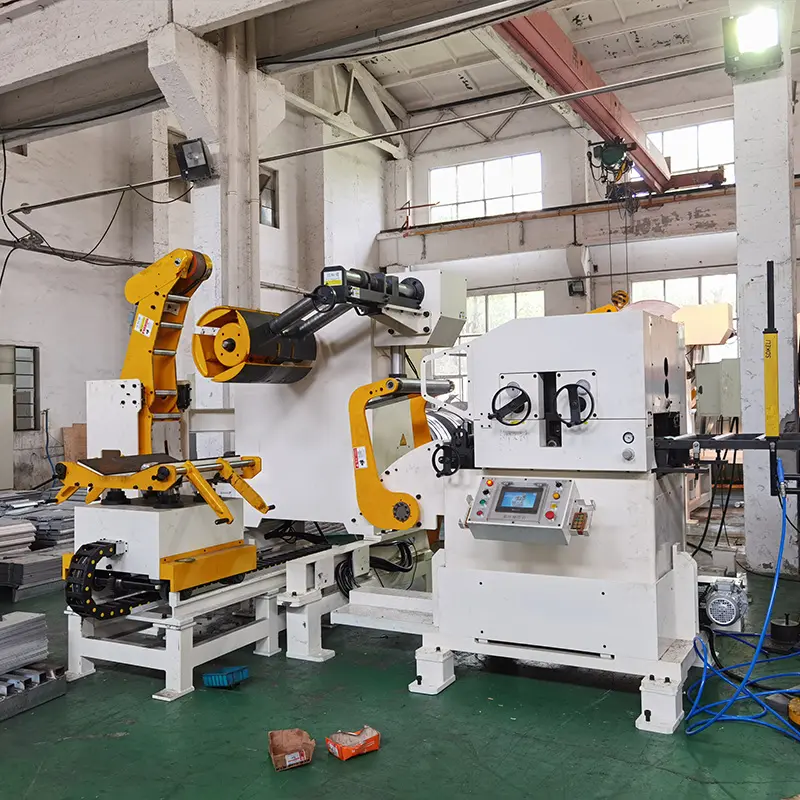
Avantages et limites de la Feuilles de revêtement de toiture
| Pour | Cons |
|---|---|
| Durable et pérenne | Le métal peut être bruyant en cas de pluie sans isolation |
| Disponible en différents modèles et matériaux | Certains types peuvent être coûteux |
| Peu d'entretien | Nécessite une installation professionnelle |
| Assure une bonne isolation thermique | Peut se cabosser ou se rayer dans des conditions extrêmes |
FAQ
| Question | Réponse |
|---|---|
| Quel est le meilleur matériau pour les plaques de couverture ? | Cela dépend de l'environnement. Pour les régions côtières, l'aluminium ou le zinc peuvent être mieux adaptés en raison de leur résistance à la corrosion. Pour les climats plus froids, l'acier avec isolation peut s'avérer le meilleur choix. |
| Puis-je poser moi-même les plaques de bardage ? | Bien qu'il soit possible de l'installer soi-même, il est recommandé de faire appel à un professionnel pour garantir un alignement et une étanchéité corrects. |
| Quelle est la durée de vie des tôles de bardage métallique ? | Selon le matériau utilisé, le bardage métallique peut durer de 40 à 70 ans avec un minimum d'entretien. |
| Les tôles de bardage métallique rouillent-elles ? | Les tôles galvanisées et zinguées sont très résistantes à la rouille, mais un entretien régulier est conseillé pour éviter la corrosion. |
En résumé, les feuilles de revêtement de toiture, en particulier les options métalliques, offrent de nombreux avantages pour divers types de bâtiments. De leur durabilité à leur attrait esthétique, elles constituent un excellent choix pour les applications résidentielles et industrielles. Choisir le bon matériau, comprendre le processus de fabrication et sélectionner le bon fournisseur sont des étapes clés pour garantir une solution de couverture durable et efficace.
